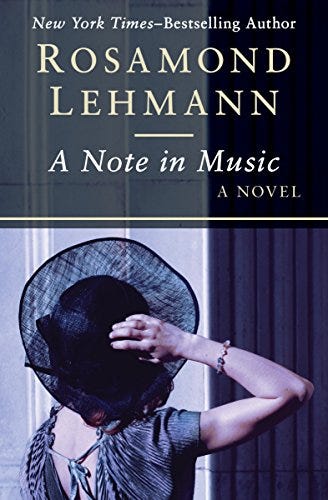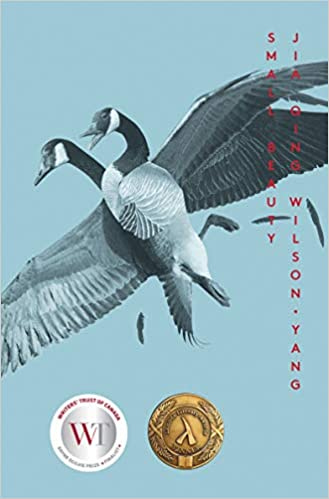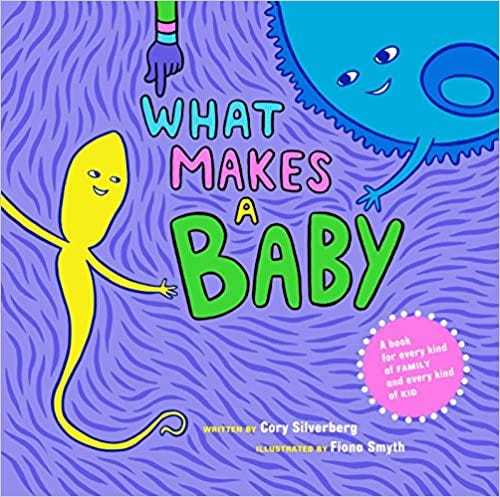“People turn strange from reading. Everything written in books is a lie.” This is what Tove Ditlevsen’s mother says when Tove’s father reads, which her mother disapproves of. Her father can get away with this, since he “has certain privileges because he’s a man and provides for all of us.” When Tove gets lost in the beautiful words and sentences that frequently run through her head, her mother disapproves and ignores her. Tove understands her father’s love of reading and shares in it whenever she can, a bond that separates them from her mother. But Tove’s relationship with her father is strained too. He often looks at her as though he wants to tell her something but never does: “He doesn’t talk to me on his own because he doesn’t know what he should say to little girls.” Instead, he pats her on the head, which her mother also disapproves of: “Then my mother pinches her lips together and he quickly takes his hand away.”
All this is from Tove Ditlevsen’s autobiographical work The Copenhagen Trilogy, available in one volume or as three separate books, Childhood, Youth, and Dependency, the first two published in 1967 and the last in 1971 (translated by Tiina Nunnally and Michael Favala Goldman). Ditlevsen’s portrait of her childhood is stunning. She captures the discomforts, injustices, and confusions of being a child, the utter bewilderment at but also longing for her mother, the desire to have greater freedom but the fear of growing up. Childhood has a stink, she says, and there’s nothing any child can do about it:
You can’t get out of childhood, and it clings to you like a bad smell. You notice it in other children — each childhood has its own smell. You don’t recognize your own and sometimes you’re afraid that it’s worse than others’. You’re standing talking to another girl whose childhood smells of coal and ashes, and suddenly she takes a step back because she has noticed the terrible stink of your childhood.
Childhood is like a coffin, Tove thinks: it’s long and you can’t get out of it on your own. One of her few means of escape is the time she spends sitting on the windowsill of the bedroom she shares with her parents, during the time after she’s gone to bed but before they have, when she is by herself and can stare at the street and daydream. Those moments and the times when language flows through her and comforts her are all that she has of her own, the only times she feels calm and safe.
Otherwise, she — as is true for any child — can only endure whatever life and her family throw at her. She can do nothing about her family’s poverty, her mother’s moodiness and anger, and the regularity with which her father loses his job. Although she and her father bond over books, she can’t do anything about his scorn that she wants to be a poet because, as he says, “Don’t be a fool! A girl can’t be a poet.” After her whole family mocks her for this dream, she “vowed never to reveal my dreams to anyone again, and I kept this vow throughout my childhood.”
All she can do is hide, and she learns to hide by wearing a mask of stupidity:
I let my mouth fall open a little and make my eyes completely blank, as if they’re always just staring off into the blue. Whenever [my childhood] starts singing in me, I’m especially careful not to let my mask show any holes. None of the grownups can stand the song in my heart or the garlands of words in my soul. But they know about them because bits seep out of me through a secret channel I don’t recognize and therefore can’t stop up.
Children have no control over anything, often not even over the contents of their own minds, because grownups somehow recognize their thoughts. It’s no wonder that Tove’s friend Ruth takes to shoplifting and Tove goes along with it until she almost gets caught and loses her nerve. At least shoplifting is an expression of independence and agency.
As much as Tove feels childhood’s burdens, however, she is terrified of growing up, because once she hits fourteen and finishes middle school, she is going to have to quit school and go to work. There is no way her parents can afford high school, and her father doesn’t want her turning into a “bluestocking,” one of those women who are always, he says, “both ugly and stuck-up.” She knows that going to work will mean her childhood is irrevocably over, the childhood that once felt so confining but now appears safe and secure. She has no way of making her dreams of being a poet come true, and now all she can look forward to is turning eighteen, at which point she can move out of her parents’ house into a room of her own.
It’s at this point that the trilogy’s first volume ends and the second begins, which describes Tove’s first jobs and her early efforts to publish her writing. I won’t discuss the second and third volumes in detail, except to say that her efforts to get published are heartbreaking: she has so few resources to help her out and relies on chance encounters with people who know people who might want to read her poems. But sometimes those people end up dying before they can help her or they tell her she’s too young to publish.
It’s also heartbreaking to understand why people in her situation marry people they shouldn’t at much too young an age. Marriage is both an escape and a trap: it’s a way to leave a bad situation but it often leaves a person in a situation just as bad, if in a different way.
And then there are the heartbreaks of the third volume, which I won’t get into, except to say that Dependency is about multiple meanings of that term. The trilogy’s first volume spoke to me the most, but I enjoyed all three of them. I’ve heard many people say that the third volume was their favorite, so if you read these books, you might agree. I liked the third volume the least — it felt a bit rushed to me — but still, it was engrossing, and together these books are an achievement.
Don’t Forget About
A Note in Music by Rosamond Lehmann was published in 1930. I read this book in 2007 and remember being captivated by it. It’s the kind of book where characters suffer in unhappy marriages and not a whole lot happens except people contemplating their sorrows. I love that kind of book! This novel tells the story of Grace, a thirty-four-year-old woman living unhappily in the north of England with her husband Tom. Her friend Norah is in a similar situation. Into this mix comes Hugh, who is young and attractive, along with his sister Clare. These two transform Grace and Norah’s world. This is a wonderful book for those who like to read about people’s inner worlds. I wrote more about it here.
Publishing This Week
Small-press books out this week that I haven’t yet read and am adding to my TBR:
I’ll Be Strong For You by Nasim Marashi, translated by Poupeh Missaghi (Astra House): Nasim Marashi is an Iranian journalist, and this novel follows the lives of three young women in Tehran and what happens in their lives and friendships through a summer and fall.
A Perfect Cemetery by Frederico Falco, translated by Jennifer Croft (Charco Press): short stories set in the Argentine mountains of Córdoba on the themes of love, romantic attachment, and coping with death and longing.
World’s Best Mother by Nuria Labari, translated by Katie Whittemore (World Editions): a thirty-five-year-old woman decides to have children. This novel charts her journey through fertility treatments to having two daughters to writing about the experience.
This Is How We Come Back Stronger: Feminist Writers on Turning Crisis Into Change, edited by the Feminist Book Society (Feminist Press): essays, fiction, and poetry from a range of writers on responding to the pandemic. 10% of every book sold will be donated to the Third Wave Foundation to support youth-led gender justice activism.
New on the TBR
New books acquired:
Written After a Massacre in the Year 2018 by Daniel Borzutzky (Coffee House Press, 2021): poems on violence in the U.S. and the longing for peace.
Stories With Pictures by Antonio Tabucchi, translated by Elizabeth Harris (Archipelago Books, 2021): short stories written in response to photographs, drawings, and paintings from Italy and Portugal.
Added to my wishlist (books that have caught my eye but I don’t yet own):
Small Beauty by Jia Qing Wilson-Yang (Metonymy Press, 2016): a novel that tells the story of Mei (quoting the publisher blurb): “a mixed race trans woman managing the death of her cousin, the ways she contorts to navigate racism and transphobia.”
A Little Devil in America: Notes in Praise of Black Performance by Hanif Abdurraqib (Random House, 2021): essays on Black performers and performances and American culture.
The Fountains of Neptune by Rikki Ducornet (Dalkey Archive Press, 2015): I’ve been vaguely aware of Rikki Ducornet but haven’t read her. When some people were chatting about her on Twitter recently, I asked for a recommendation on where to start, and this book is what they suggested.
Currently Reading
Outline by Rachel Cusk (Picador, 2016): finally, finally, I’m getting around to read Cusk’s fiction.
The Cormac Report
Thinking about the recent anti-trans legislation that has passed or could soon pass in various states around the U.S., I want to recommend a couple books I’ve read with Cormac on bodies, sexuality, and gender that aim to be as inclusive as possible.
The thought of talking about sex with my kid was something that used to make me nervous back in his earliest days, but then I bought books on the subject, and everything was fine. I mean, more or less and only so far, of course! I’m not talking about advice books for adults, but books written for kids that I could read to him and with him. I started reading these to him at a ridiculously early age, and then basically never stopped, by which I mean we read them occasionally so it stays comfortable to talk about the subject together. It’s so much easier to discuss a tricky topic by reading a book about it together rather than just having a conversation. Yay, books!
The two books I have in mind are actually by the same author and illustrator and aimed at different age ranges. What Makes a Baby, written by Cory Silverberg and illustrated by Fiona Smyth, is aimed at kids age 3-7 or so, and it covers basic ideas about bodies, conception, pregnancy, and birth. It does so without assuming anything about family structure, the gender or sexuality of the parents or child, the way the baby was conceived, or the form of birth, which makes it easy to talk about all kinds of things from what it means to be trans or nonbinary to different family types to in vitro fertilization to c-sections. It doesn’t talk about how boys have this and girls have that, but instead about how some people have these parts, some those parts, so everyone is included. Sex is a Funny Word is by the same author and illustrator and is aimed at kids 8-10. It’s along the same lines as the first book but with more detail, appropriate to that age.
Kids learn this stuff so easily and naturally; Cormac has no trouble understanding what it means to be gay or trans or nonbinary, although the last one does get tricky because our culture is so devoted to the gender binary. There’s nothing like having a kid to make you realize how utterly entrenched binary thinking is. For sure, these books are teaching me as much as they are teaching Cormac.
Have a good week everyone!








